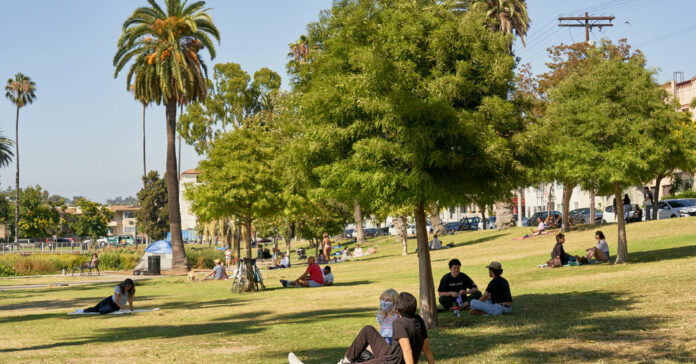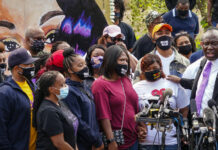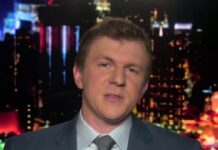Image

Good morning.
(This article is part of the California Today newsletter. Sign up here to get it delivered to your inbox.)
First, we have an update on the pandemic and more grim milestones:
California now has reported more coronavirus cases than New York, the early epicenter of the pandemic in the U.S., where the spread of the virus has slowed.
There have now been more than 422,000 cases announced in California, the most of any state, according to The New York Times’s database. New York, with more than 413,000 known cases, had the most until Wednesday.
California also broke its single-day record, with more than 12,100 new cases announced.
[See The Times’s map tracking coronavirus cases across the state.]
Gov. Gavin Newsom said on Wednesday that as the state scrambles to expand testing, it expected to find more cases. The challenge for the state, he said, was to sustain its virus response.
“We are not going to let off in our day-to-day monitoring and our technical assistance,” he said. “We’ll see those numbers increase and as a consequence, we need to be more vigilant and more aware of our personal behaviors and our collective behaviors.”
Mr. Newsom has said the state’s early stay-at-home order and efforts to increase hospital capacity bought California some time.
Now, as counties across the state contend with climbing case numbers, he said, California is in a better position than before to distribute protective equipment and tailor restrictions to allow some businesses to reopen outside.
Mr. Newsom announced a deal for 420 million more masks, but also said that the state was working to attract manufacturing of such equipment to California.
And he applauded “the president and others” for wearing a mask — what the governor has repeatedly described as the most effective “non-pharmaceutical” intervention to help prevent the spread of the virus.
[Look back at early hypotheses about why the virus affected California and New York so differently.]
While California has overtaken New York in reported cases, it’s tough to know which state has actually had more total infections. Both had significant outbreaks very early on, when testing was severely limited, and the Centers for Disease Control and Prevention has said that huge numbers of infections went undetected, dwarfing the number of known cases.
For example, in a recent study of antibody prevalence, the C.D.C. found evidence that as many as 2.8 million people in the New York City area had been infected by May 6 — 10 times the number of cases reported by then. The figure for San Francisco in late April was nine times.
New York remains by far the hardest-hit state by another measure: It has recorded 32,218 deaths related to Covid-19, according to a Times database — more than the next three states (New Jersey, Massachusetts and California) combined.
As of Wednesday, California had recorded 7,893 deaths.
Still, Mr. Newsom cautioned against becoming inured to the deaths of about 90 people per day, on average over the past week.
“We should be very sober about the loss,” he said.
[See The Times’s interactive look at the expansion of testing. It’s not what’s driving rising case counts.]
Here’s what else we’re following
We often link to sites that limit access for nonsubscribers. We appreciate your reading Times coverage, but we also encourage you to support local news if you can.
Image
-
John Muir has long been a towering figure in California’s environmental movement. Now, the president of the Sierra Club, an organization he helped start, said the club must reckon with Mr. Muir’s racism. [The New York Times]
-
The F.B.I. has connected the killing earlier this month of a men’s rights lawyer outside his home in San Bernardino with a shooting at the New Jersey home of a federal judge that killed the judge’s son and seriously injured her husband. [The New York Times]
-
Pacific Islanders have formed a small but close-knit community in Los Angeles County. They’ve been disproportionately sickened by Covid-19. [The Los Angeles Times]
-
The Orange County-based independent label Burger Records shut down amid sexual misconduct allegations. [The Orange County Register]
-
A group of California parents represented by the conservative lawyer Harmeet Dhillon sued the state over a plan that would keep most schools closed at the beginning of the school year. [CapRadio]
If you missed it, here’s what the plan entails. [The New York Times]
-
Local officials in smaller Coachella Valley cities say the $12 per resident from the federal CARES Act distributed to them by the state is not enough. Bigger cities, they said, got more per resident. [The Desert Sun]
-
For decades, Chula Vista has tried to attract a four-year university. This week, the city got bad news: It won’t be getting a Cal State University campus. [The San Diego Union-Tribune]
-
Apple this week became the latest tech giant to promise to help reduce greenhouse gases. By 2030, the company pledged, every Apple device will have “net-zero climate impact.” [The New York Times]
-
Lauren Hughes is a grocery store worker in Temecula. She wrote a diary of her life for a month. It involved protests, conversations with friends and angry customers. [The Lily]
-
At the 2015 Comic-Con in San Diego, Representative John Lewis cosplayed as his younger self, from 1965, when he led hundreds across the Edmund Pettus Bridge. At the convention center, he started walking with children from a panel room to a booth. By the time he took notice, almost 1,000 people were following. [The New York Times]
The Coronavirus Outbreak ›
Frequently Asked Questions
Updated July 22, 2020
-
Why do masks work?
- The coronavirus clings to wetness and enters and exits the body through any wet tissue (your mouth, your eyes, the inside of your nose). That’s why people are wearing masks and eyeshields: they’re like an umbrella for your body: They keep your droplets in and other people’s droplets out. But masks only work if you are wearing them properly. The mask should cover your face from the bridge of your nose to under your chin, and should stretch almost to your ears. Be sure there are no gaps — that sort of defeats the purpose, no?
-
Is the coronavirus airborne?
- The coronavirus can stay aloft for hours in tiny droplets in stagnant air, infecting people as they inhale, mounting scientific evidence suggests. This risk is highest in crowded indoor spaces with poor ventilation, and may help explain super-spreading events reported in meatpacking plants, churches and restaurants. It’s unclear how often the virus is spread via these tiny droplets, or aerosols, compared with larger droplets that are expelled when a sick person coughs or sneezes, or transmitted through contact with contaminated surfaces, said Linsey Marr, an aerosol expert at Virginia Tech. Aerosols are released even when a person without symptoms exhales, talks or sings, according to Dr. Marr and more than 200 other experts, who have outlined the evidence in an open letter to the World Health Organization.
-
What are the symptoms of coronavirus?
- Common symptoms include fever, a dry cough, fatigue and difficulty breathing or shortness of breath. Some of these symptoms overlap with those of the flu, making detection difficult, but runny noses and stuffy sinuses are less common. The C.D.C. has also added chills, muscle pain, sore throat, headache and a new loss of the sense of taste or smell as symptoms to look out for. Most people fall ill five to seven days after exposure, but symptoms may appear in as few as two days or as many as 14 days.
-
What’s the best material for a mask?
- Scientists around the country have tried to identify everyday materials that do a good job of filtering microscopic particles. In recent tests, HEPA furnace filters scored high, as did vacuum cleaner bags, fabric similar to flannel pajamas and those of 600-count pillowcases. Other materials tested included layered coffee filters and scarves and bandannas. These scored lower, but still captured a small percentage of particles.
-
Does asymptomatic transmission of Covid-19 happen?
- So far, the evidence seems to show it does. A widely cited paper published in April suggests that people are most infectious about two days before the onset of coronavirus symptoms and estimated that 44 percent of new infections were a result of transmission from people who were not yet showing symptoms. Recently, a top expert at the World Health Organization stated that transmission of the coronavirus by people who did not have symptoms was “very rare,” but she later walked back that statement.
And Finally …
Image
Sports are finally back — sort of. But like everything else, they’re going to have to be different.
Maybe, my colleagues on the Sports desk speculated, that’s a good thing. Maybe this is when the big leagues can reboot.
In this feature, they suggested a range of fixes large and small to make sports safer for athletes (realign conferences to minimize travel and maximize rivalry) and make them more accessible for fans (simplify rules, allow fun stuff like bat-flipping).
One change I’m especially rooting for: More women making strides in sports spaces dominated by men.
This week, for instance, Alyssa Nakken started as the San Francisco Giants’ first-base coach in an exhibition game at Oracle Park, making her the first woman to coach in big-league history, according to The San Francisco Chronicle. And, of course, there was the announcement that a majority women-owned National Women’s Soccer League team is set to come to Los Angeles.
California Today goes live at 6:30 a.m. Pacific time weekdays. Tell us what you want to see: [email protected]. Were you forwarded this email? Sign up for California Today here and read every edition online here.
Jill Cowan grew up in Orange County, went to school at U.C. Berkeley and has reported all over the state, including the Bay Area, Bakersfield and Los Angeles — but she always wants to see more. Follow along here or on Twitter.
California Today is edited by Julie Bloom, who grew up in Los Angeles and graduated from U.C. Berkeley.







